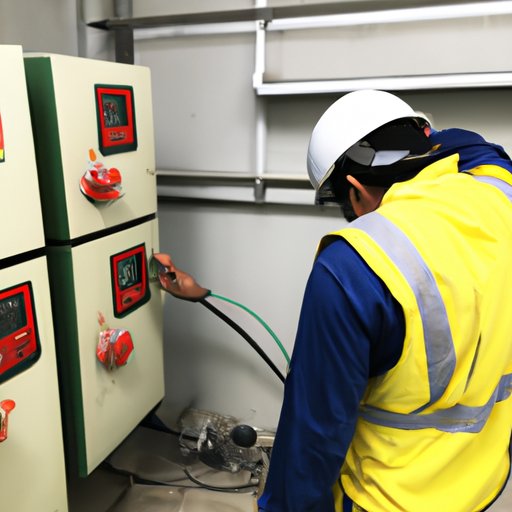Introduction
Maintenance is an important job that involves ensuring the proper operation of machines and equipment in various industries. It requires a range of technical and problem-solving skills to diagnose and fix issues, as well as knowledge of safety protocols. Becoming a professional maintenance technician requires dedication and a commitment to staying up-to-date on the latest technology and industry trends. This article will provide an overview of the steps required to become a successful maintenance technician.

Understand the Basics of Maintenance
Before diving into the details of becoming a maintenance technician, it’s important to understand the basics of the job. Maintenance technicians are responsible for inspecting, maintaining, repairing, and replacing parts on machines and equipment used in industries such as manufacturing, healthcare, and automotive. There are two main types of maintenance: preventive maintenance and corrective maintenance. Preventive maintenance focuses on avoiding problems by regularly scheduling inspections and performing routine maintenance tasks. Corrective maintenance is used to address existing problems or malfunctions.
It’s also important to have a basic understanding of the equipment and processes used in your industry. Maintenance technicians need to be familiar with the parts and components of machines and be able to identify potential problems. They should also understand how the machines work and what processes are involved in their operations.
Develop a Regular Maintenance Schedule
Once you have a basic understanding of maintenance, you can start to develop a regular maintenance schedule. This involves establishing the frequency of maintenance checks and creating checklists and documentation. Depending on the industry and type of machine, these checks may need to be done daily, weekly, monthly, or even annually. Developing a checklist can help you make sure all necessary tasks are completed during each maintenance check. You should also create documentation to track any changes or repairs made to the machine.

Learn How to Diagnose Problems
In order to identify and fix problems quickly, maintenance technicians need to be able to diagnose issues. This involves being able to recognize signs of trouble, such as strange noises or unusual vibrations, and knowing how to troubleshoot the issue. Troubleshooting techniques include using diagnostic tools and testing components of the machine to determine the cause of the malfunction.

Have an Understanding of Safety Standards
Safety is a top priority for any maintenance technician. It’s important to adhere to OSHA regulations and other safety standards when working with machines, such as wearing protective gear and following safety protocols. Additionally, it’s also important to implement safety policies within the organization and ensure that all team members adhere to them.
Stay Up-to-Date on Equipment and Technology
Maintenance technicians must stay up-to-date on new equipment and technology. This includes learning new systems, understanding software updates, and being able to use the latest tools and diagnostic equipment. Staying current on industry trends can help you identify potential problems and keep machines running smoothly.
Utilize Preventive Maintenance Techniques
Preventive maintenance is an important part of the job for any maintenance technician. This involves using proactive strategies to avoid problems and keep machines running at peak performance. These strategies include regular inspection and maintenance checks, keeping accurate records, and having a parts inventory on hand.
Develop Good Communication Skills
Good communication skills are essential for any maintenance technician. This includes being able to work effectively with teams, explain complex concepts to non-technical colleagues, and communicate with supervisors. Having strong communication skills can help you diagnose problems quickly and efficiently.
Conclusion
Becoming a professional maintenance technician requires a range of technical and problem-solving skills, as well as a commitment to staying up-to-date on the latest industry trends. To be successful in this role, you need to understand the basics of maintenance, develop a regular maintenance schedule, learn how to diagnose problems, have an understanding of safety standards, stay up-to-date on equipment and technology, utilize preventive maintenance techniques, and develop good communication skills. With the right set of skills and knowledge, you can become a successful maintenance technician.
The benefits of maintenance go beyond just ensuring the proper operation of machines and equipment. Maintenance technicians play an important role in keeping organizations safe and efficient, and helping them achieve their goals. If you are looking to become a professional maintenance technician, now is the time to get started.
(Note: Is this article not meeting your expectations? Do you have knowledge or insights to share? Unlock new opportunities and expand your reach by joining our authors team. Click Registration to join us and share your expertise with our readers.)
